 As previewed in our previous post, this installment of our COVID Cross Country Series looks at how to practically run a cross country meet during the pandemic in effort to entirely limit social contact and actively observe the NHIAA Guidelines for Cross Country. The meet management suggestions below were generated by members of the NHIAA Cross Country Committee and represents the bare minimum of what constitutes a cross country meet/competition. With schools and athletic directors of NH actively looking for ways to safely have a cross country season, we hope what is described below makes practical sense.
As previewed in our previous post, this installment of our COVID Cross Country Series looks at how to practically run a cross country meet during the pandemic in effort to entirely limit social contact and actively observe the NHIAA Guidelines for Cross Country. The meet management suggestions below were generated by members of the NHIAA Cross Country Committee and represents the bare minimum of what constitutes a cross country meet/competition. With schools and athletic directors of NH actively looking for ways to safely have a cross country season, we hope what is described below makes practical sense.
1. Meets with 2-3 teams total is recommended; Races comprised of 28-35 runners; multiple races
Observing the guidelines and considering the current climate, in order to have a cross country season at all, we have to accept the following regarding meets. For the time being they need to be SMALL. Whether broken down into manageable sessions or simply 2-3 teams total, the gathering for any given period of time has to have limits. Besides, following the guidelines for XC, we have to look at spacing 6′ on the starting lines and avoid finish line congestion caused by chutes. Which brings us to no more than 28-35 runners on any given starting line. To have a race with this many runners, you have to have a starting line  168′-210′ in length. If your starting line is shorter, then even less runners to be socially safe. We have to accept and communicate this to our athletic directors and schools.
168′-210′ in length. If your starting line is shorter, then even less runners to be socially safe. We have to accept and communicate this to our athletic directors and schools.
2. Each host school should determine maximum number of participants based on facility and course flow
At the same time, this does not mean you have to limit to only those numbers per gender. A host school can decide to have multiple races or waves within the above numbers, but it has to be up to the host school as they need to consider their facility and cross country course when making this decision. For example, if a course can fit 20 runners on a starting line within 6′ of each other at a dual meet (2 teams total), each team would have 10 runners on the line. If there are additional runners, meet management can choose to have a separate race of up to 20 or another wave of up to 20 start at a later time. Whether that is 10 seconds later or minutes later is determined by meet management and flow of the course (be careful of overlapping). With that said, the host school should notify  visiting teams of their limits, to prevent confusion and give visiting schools a chance to adjust and plan.
visiting teams of their limits, to prevent confusion and give visiting schools a chance to adjust and plan.
Smaller programs may only have a few runners. Additionally, schools may only approve a certain number of athletes for travel. This should also be communicated. As with everything, but even more now, consistent communication is key.
3. Finish line – Ensure team placing only!
What is the sole purpose of holding a cross country competition? Further, what is the MOST important statistic necessary to determine the outcome? THE TEAM SCORE!!! Times are secondary, perhaps tertiary. Times and individual names can be added to results AFTER teams leave. With that said, all meet management has to do on site is determine team order of finish and this can be done without a finish chute, with 3 people (coaches or volunteers) at a finish line. Two of the three would be responsible for tallying order of finish on a clipboard (school names only), one being a caller and one recording. The third, and this could be unmanned, videoing the finish line with either a cellphone or a tripod and camera to review later. From this, team scores can be calculated. Coaches can record times of their respective teams. Coaches know the names of individual athletes on their respective teams. Have a goal of reconciling individual names and times within 48 hours.  Communicate names and times to host school via email!
Communicate names and times to host school via email!
With all this, the most important thing to remember is the athlete. We want each of them to toe the starting line safely. Compete and experience a cross country race safely. Finish safely, and leave…safely. That means no crowding, no gathering within 6 feet. Now lets consider coaches and volunteers. We want their experience to be safe as well, with no exchanging of cards, no tearing tags off bib numbers, managing a chute, etc… As remote learning has taught us, we can accomplish so much within the safety of our homes. We can add the names and the times after teams have gone home. Racing, the simple act of running, needs to be paramount over the details in effort to be safe.
It is one thing to have the NHIAA as well as a national federation promote safe participation in high school sports by offering guidelines, it is another thing to prove it to be safe. As a state, we need to first prove a simple high school cross country race involving 2 or 3 teams can be done safely prior to considering larger events. While this has already been shown in other parts of our country, we need to do it here, inside our state’s specific situation first. Let’s do it!
-NHCC







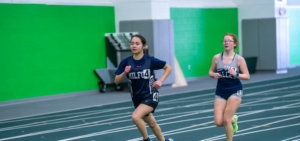
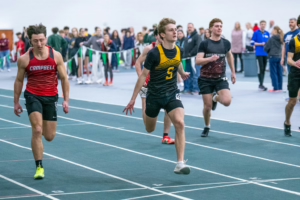
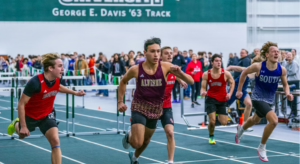
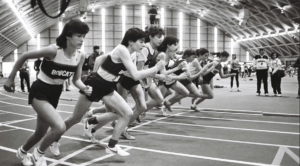
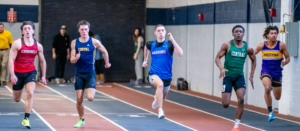
One Response
Great article, I sent this right to my AD and Superintendent. Big thanks to everyone who had a hand in creating the NHIAA XC guidelines and the info and ideas in this article!
The Portsmouth school system has not decided yet if it will opt in to the NHIAA XC season, and we won’t find out for another 2-3 weeks. I’m really proud of all the PHS XC athletes for continuing to work hard and put in a ton of summer running.
This has been a tough time for all athletes and coaches and I commend everyone for staying upbeat and focused. Keep running and good luck to everyone!
Mike Lyford
Portsmouth Boy’s Coach
(The MOOVE guy 🙂